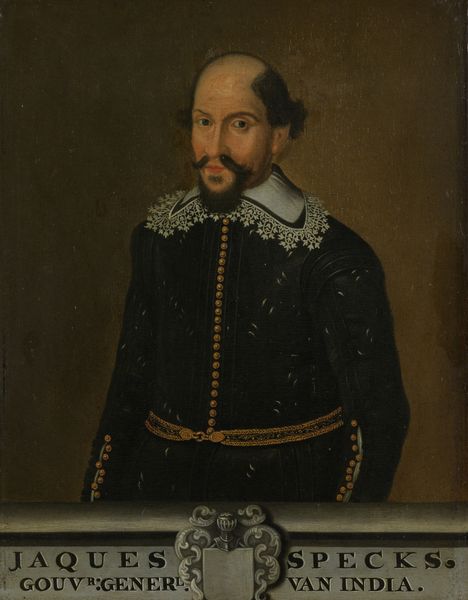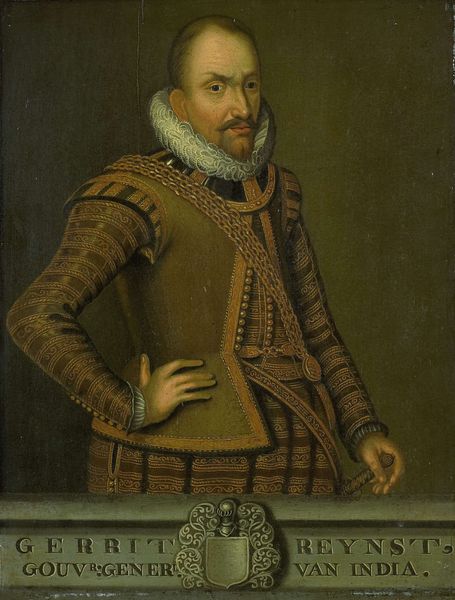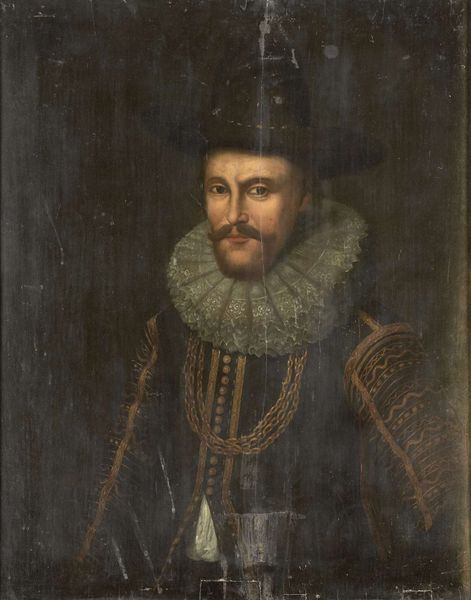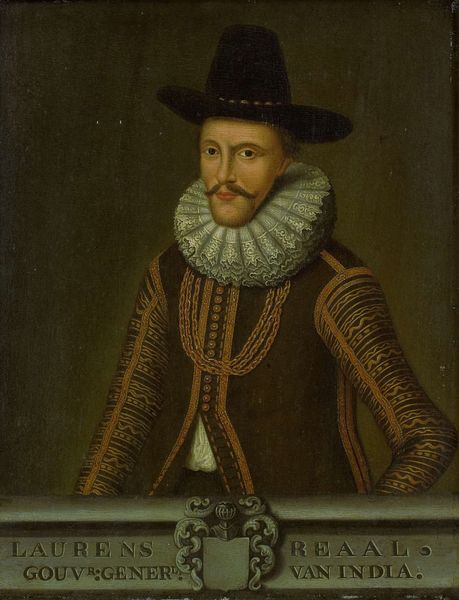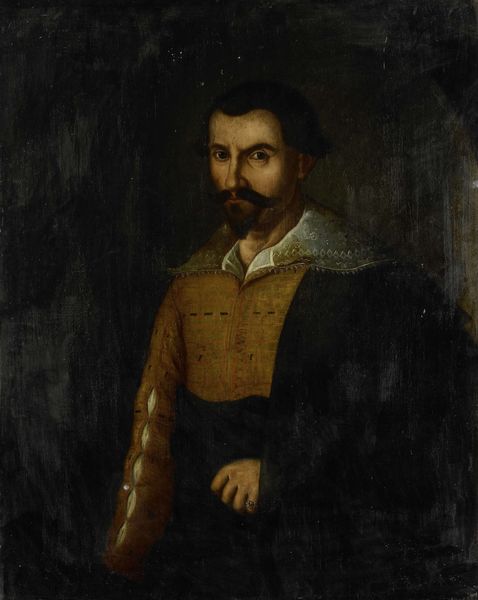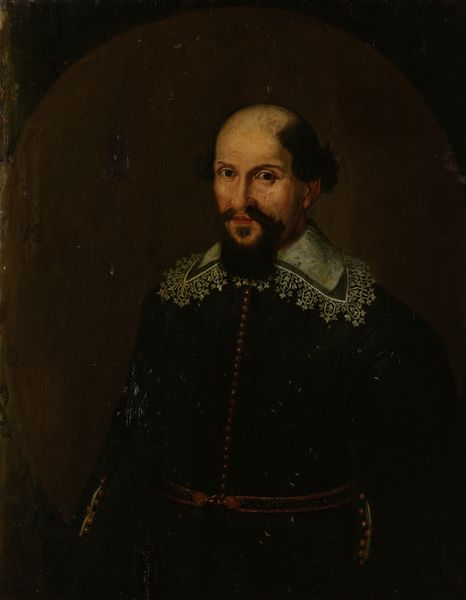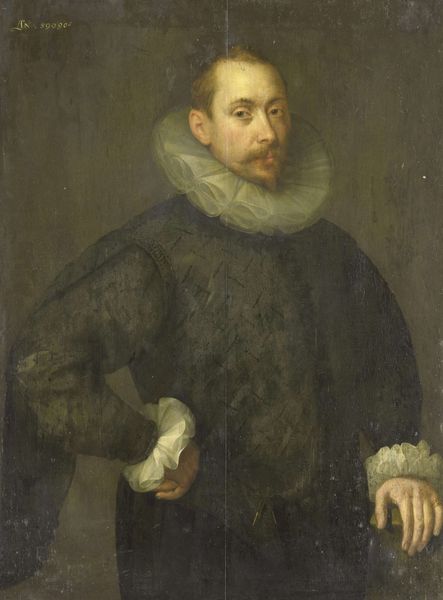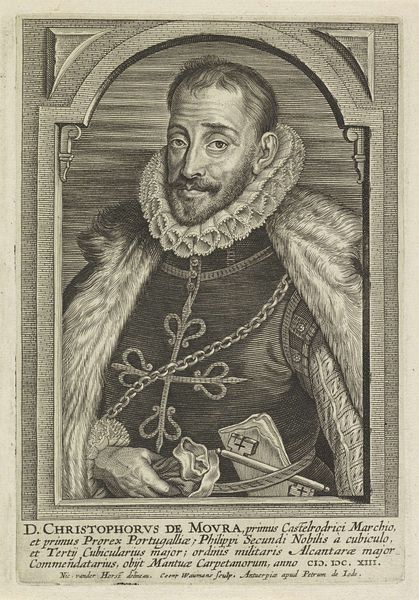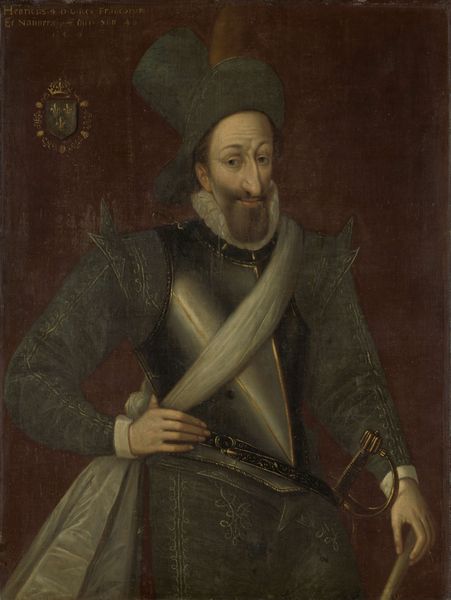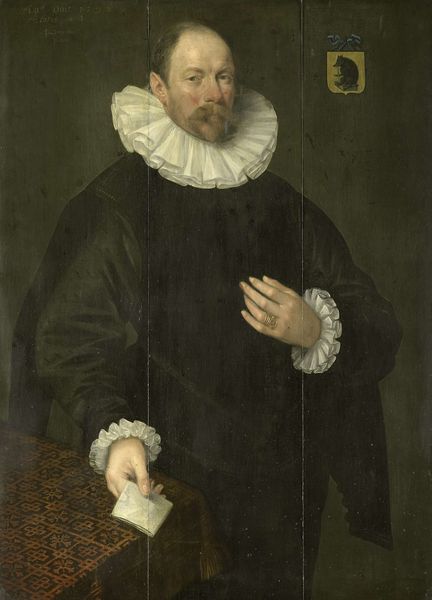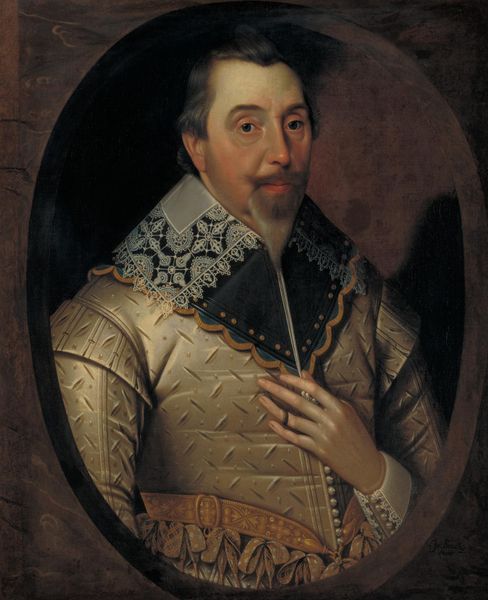
Portrait of Pieter de Carpentier, Governor-General of the Dutch East Indies 1750 - 1800
0:00
0:00
Dimensions: height 33 cm, width 25 cm, depth 3.7 cm
Copyright: Rijks Museum: Open Domain
Curator: Here we have a rather stately portrait, believed to be painted sometime between 1750 and 1800. It depicts Pieter de Carpentier, the Governor-General of the Dutch East Indies. Editor: He certainly exudes power, doesn’t he? There's a somber quality to the colors, a stillness. His expression is unreadable, perhaps a bit imposing. Curator: Indeed. This work offers insights into the power dynamics of the Dutch East India Company. Portraits like these were carefully constructed to project authority and legitimacy. They shaped the narrative around colonialism and trade. Editor: Absolutely, and his elaborate collar, the fine fabric of his coat—it's all symbolic, meticulously constructed to reinforce his status. One has to think critically about how these images influenced perceptions and, arguably, justified exploitative practices. What was the experience of the sitter's subjects who certainly wouldn't have enjoyed such status and privilege? Curator: Right, considering that visual propaganda is nothing new. Such artwork functioned within networks of patronage and power. These portraits reinforced existing hierarchies and class structures of Dutch society while they controlled foreign resources. The artist is, unfortunately, unknown, adding another layer to the mysteries and assumptions surrounding its origins. Editor: Yes, the unknown artist could open all kinds of interesting, though probably unanswerable, lines of questioning: where and why was it made, and for what kind of audience? That absence reminds us that dominant narratives often obscure so many other voices. The painting itself becomes a site of potential resistance— a silent witness. Curator: Looking closer at this figure today, this depiction really underlines the critical importance of examining how historical forces play out even in art, with the complex interplay of power and representation. Editor: Exactly. Even in its stillness, it provokes contemplation about these broader cultural and political legacies. Let's never forget these were human lives shaped, as well as exploited, by economic circumstances.
Comments
No comments
Be the first to comment and join the conversation on the ultimate creative platform.
